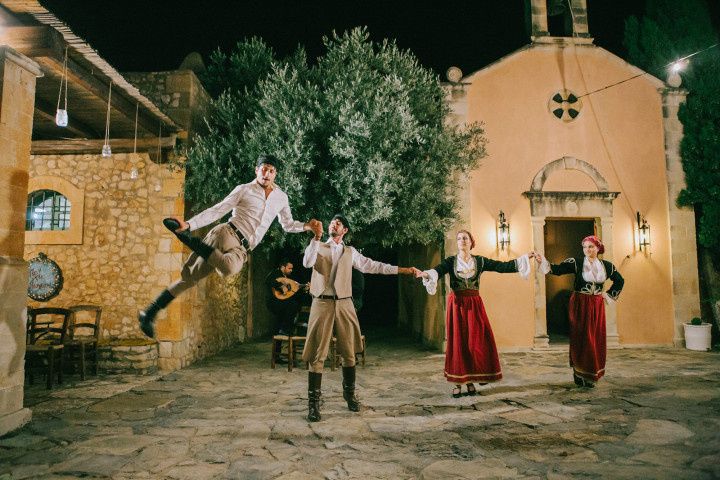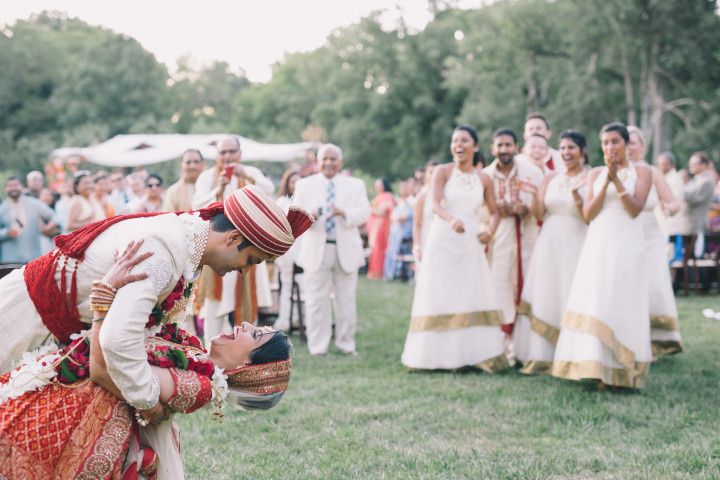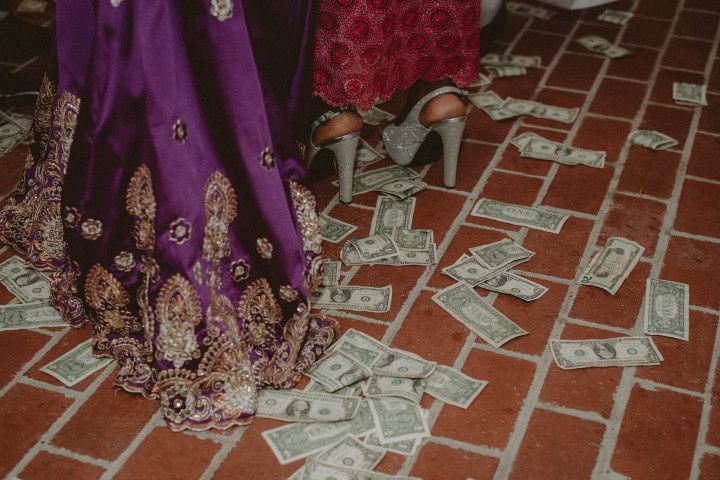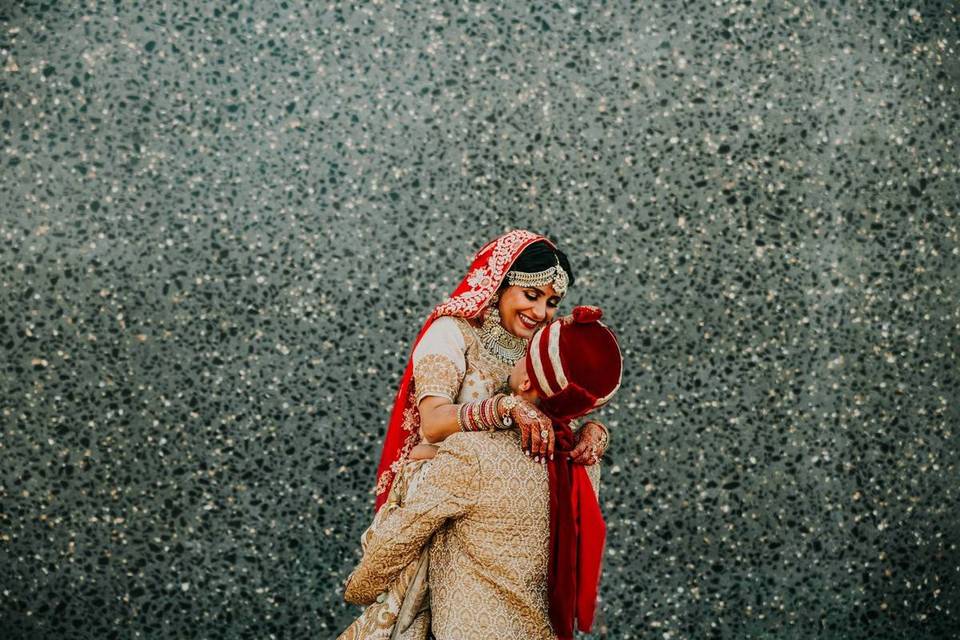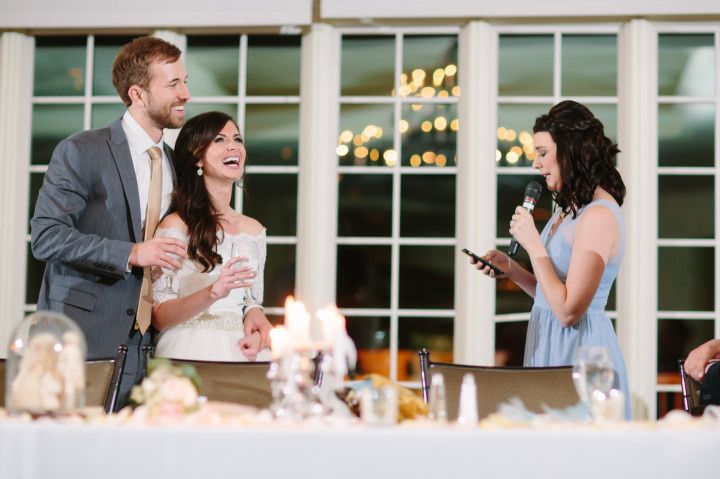How to Attend Your First Jewish Wedding
From the chuppah to the hora and much more, read our tips on what to know before attending a Jewish wedding.
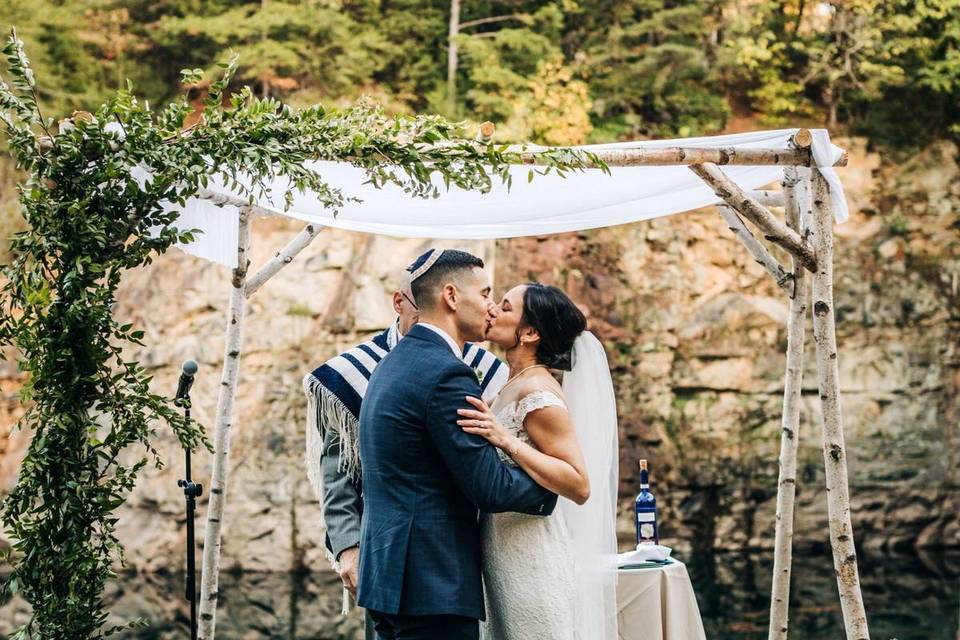
Jewish weddings are full of traditional elements, that are both meaningful and emotional, but also celebrate the joy of a couple’s union. If you’ve never attended a Jewish wedding before, you may not be aware of the traditions that are part of both ceremony and reception.
We asked officiants and experts to help explain some of the important elements of a Jewish wedding.
What to Wear to a Jewish Wedding
The location of the ceremony will likely dictate what to wear to a Jewish wedding. If the wedding is being held in a synagogue, women should make sure their shoulders are covered (by a jacket or shawl if your attire is more skin-baring) and men should wear suits or tuxedos. If the ceremony is in a different location, the attire rules may be more flexible.
Oftentimes at Jewish wedding, head coverings will be on offer for guests. “If you are offered a head cover, wear it. It might be a kippah (skull cap) for men, or a lace head cover for women,” says Rabbi Larry Seidman of Irvine, California. “You don’t have to be Jewish to wear them.”
Another attire rule for Jewish weddings? “Don't wear white—it upstages the bride,” says Rabbi Robert Silverman of South Florida. “Dress respectfully. If you’re not sure, always ask to avoid an awkward situation.”
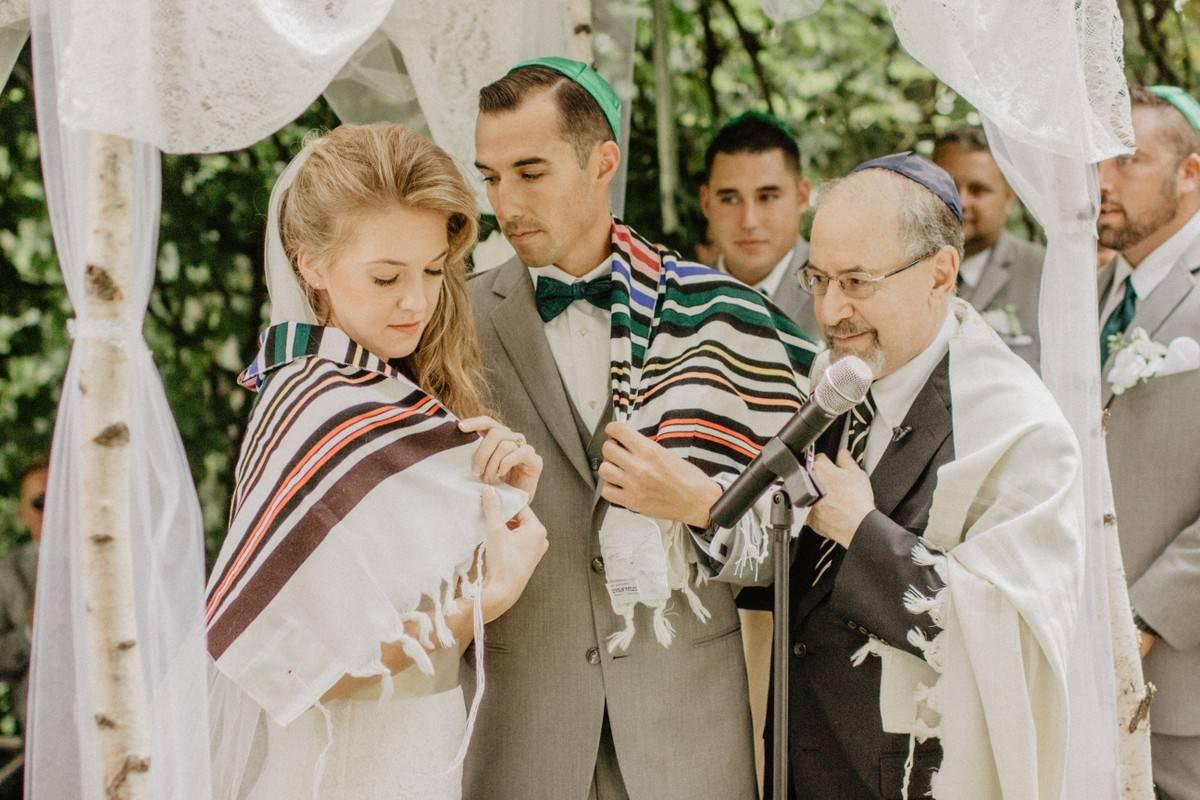
Ceremony Traditions
The traditions you’ll experience at a Jewish wedding will depend on the branch of Judaism the couple belongs to: Orthodox, Conservative, or Reform. In all Jewish weddings, couples typically sign a marriage contract, called a ketubah, before the ceremony begins. The ketubah is usually formally presented to the couple during the ceremony.
In some types of Jewish weddings, there may be rules on where guests can sit. “With Orthodox weddings, women and men may be required to sit separately during the ceremony,” says Nancy Goldstein of Amazing Celebrations & Events in Glastonbury, Connecticut. “The reception may also require men and women to sit separately with a divider down the center of the reception hall.”
The ceremony processional will also be a bit different than at a Christian ceremony. “Guests will notice that both parents are escorting the bride and groom down the aisle,” says Rabbi Andrea Frank of The Jewish Wedding Traveling Rabbi in Westchester County, New York. “The processional usually goes as follows: The parents escort the groom to the chuppah (wedding canopy), rather than the groom enter from a side entrance. The parents escort the bride only to the middle of the aisle. The groom walks from the chuppah, acknowledges his soon to be in-laws. The bride’s parents then walk first to the bride's side of the chuppah. The groom escorts the bride to the chuppah.”
Another unique Jewish wedding tradition is the “circling of the groom,” which can be performed in a variety of ways. “The act of circling the groom is symbolic of the bride keeping the groom far from the reach of evil influences and including the attention of other women,” says Rabbi Cantor Annie Bornstein of Jewish Heart and Soul in Glen Allen, Virginia. “By circling the groom, the bride is also symbolically creating her new family, binding him to her and her to him over all other relationships (parents). In contemporary times, our grooms often circle the bride for the same reasons. Together, they create the holy space that represents the home that they will now build together.”
There may be some audience participation in a Jewish wedding ceremony. "After a blessing is recited, everyone should respond with an Amen, which means 'so be it',” says Rabbi Michael Raab of Jewish & Interfaith Weddings in Naples, Florida. “This is also used during prayers in Christianity and Catholicism."
One of the most unique (and fun!) parts of a Jewish ceremony is the breaking of the glass, when usually the groom, but sometimes the bride or even both members of the couple, stomp on a glass (covered in a cloth for safety!). “The breaking of the glass originally was a statement reminding us to remember the destruction of the First Temple in Jerusalem by the Babylonians in 586 BCE,” says Rabbi Bornstein. “Consequently, even in our great joy we are called upon to remember this heartbreaking tragedy. We've found another meaning for the breaking of the glass...The breaking of the glass reminds us that relationships are fragile and easily broken. The shards of broken glass remind us to nurture our beloved partners all the days of our lives.”
After the glass is broken, the couple will kiss and guests can celebrate. “When the groom breaks the glass at the end of the ceremony, yell Mazel Tov, which means good luck,” says Rabbi Seidman.

At the Reception
Jewish wedding receptions are full of joy—and lots of dancing! Guests will typically join the couple on the dance floor for the traditional and celebratory hora (a lively circle dance) after the first dance is completed. “Join in when they dance the hora at the reception - it doesn’t matter if you know the steps or not,” says Rabbi Seidman. “Feel free to fake it—nobody will notice.”
During the hora, the couple will likely be seated on chairs and hoisted up into the air by strong guests. The couple’s parents and/or siblings may also be lifted in chairs for added fun (and great photos!).
As at most weddings, you’ll likely hear toasts and speeches from loved ones during the reception. “When toasting the couple, it is traditional to say, ‘L'Chaim’ meaning ‘to life’. The word is pronounced L - CHA - YIM, with the Cha pronounced like you're trying to clear your throat,” says Nancy Goldstein.
Giving Gifts
When it comes to gift-giving etiquette for Jewish couples, guests usually send registry gifts to the couple in advance, or bring monetary gifts to the reception. “Regarding a monetary gift, the number 18 figures importantly in Jewish culture,” says Nancy Goldstein. “The Hebrew word for 18 is 'Chai' which means 'alive' or 'life'. It is traditional to 'Give Chai' or to determine gifts in multiples of 18 (i.e. 54, 72, 108, etc.).”

